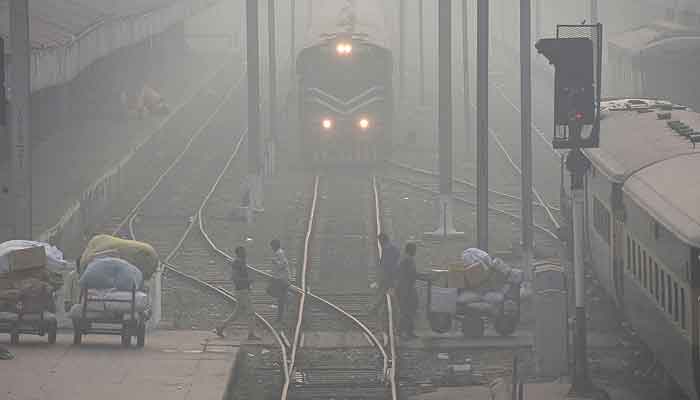Smog persists in Lahore, other major urban entres.
Punjab govt mulls options to curb air pollution.
LHC orders to close all schools and colleges on Nov 18.
LAHORE: Amid the worsening smog situation in Lahore, the Punjab government has started planning to carry out artificial rain in the provincial capital later this month, reported The News on Friday.
This will be the first of its kind experiment in the country.
In this regard, a meeting was held with Provincial Environment Minister Bilal Afzal and Education Minister Mansoor Qadir in the chair which discussed the evaluation of short, medium and long-term measures to control smog in the city.
Secretary Environment Rashid Kamalur Rehman, representatives of the Environment Protection Department, SPARCO and various universities participated in the meeting.
Consultation on artificial rainfall to eliminate smog was also held and it was decided that preparations should be made regarding artificial rain on November 28 or 29, when there is possibility of a cloudy weather.
The provincial minister said that a team and working group should be formed to provide artificial rain which will consult on providing aircraft to carry out artificial rain.
Bilal Afzal said that clouds were necessary and the working group would have to consider all aspects of the artificial rain. The final proposals of the working group will be sent to the chief minister for approval, he said.
Punjab districts including Lahore Jhang, Hafizabad, Khanewal, Nankana, Bahawalnagar and Sheikhupura are experiencing the worst air pollution.
Meanwhile, the Lahore High Court has ordered the authorities to close all schools and colleges on Nov 18 in smog-hit districts. The court also directed the government to implement a work-from-home policy for two days a week.
Why is pollution in South Asia worse than in other places?
Countries in South Asia have seen a marked increase in industrialisation, economic development, and population growth over the past two decades, leading to increased demand for energy and fossil fuels.
While sources like industries and vehicles affect most countries, certain major contributors are unique to South Asia, including solid fuel combustion for cooking and heating, human cremation, and burning of agricultural waste.
About 38% of the pollution in New Delhi this year, for example, has been caused by stubble burning — a practice where stubble left after harvesting rice is burnt to clear fields — in the neighbouring states of Punjab and Haryana.
An increase in the number of vehicles on roads as the region has developed has also exacerbated the pollution problem. In India and Pakistan, for example, the number of vehicles has increased four-fold since the early 2000s.
New Delhi, ranked the world’s most polluted capital for four years in a row by Swiss Group IQAir, has 472 vehicles per thousand population, according to government data, with almost eight million vehicles plying on its roads as of 2022.

